Discover Iceland's volcanic landscapes and geothermal wonders near Reykjavík in a thrilling day tour. Trek to fresh eruption sites, see a historic lighthouse, cross an extraordinary tectonic bridge, and witness the country's incredible geothermal phenomena.
From
Join our Volcano Hike and Geothermal Tour for a journey from Reykjavík to the active Reykjanes Peninsula. This trip gives you a close-up look at Iceland's geothermal wonders and recent volcanic sites. You'll hike through Geldingadalur Valley, passing the Fagradalsfjall and Meradalir Volcanoes, and see the amazing changes in the landscape from recent 2021-2024 eruptions.
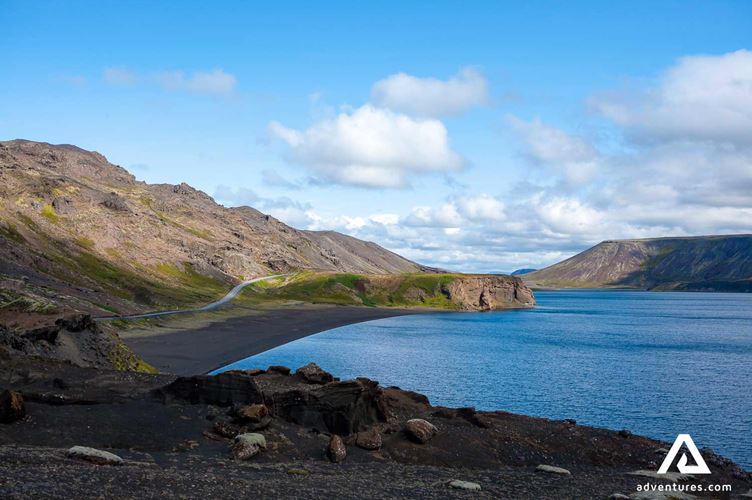
On our tour, we might visit Lake Kleifarvatn, the largest lake in the Reykjanes Peninsula. You'll see its special landscape created by volcanoes under glaciers and find out how earthquakes have transformed its waters.
(This stop is not currently guaranteed on each tour. If the volcano hike takes longer than expected, we may skip this stop.)
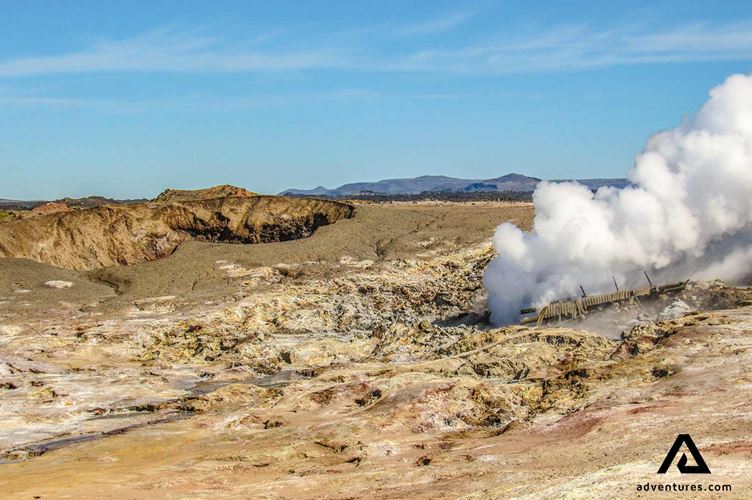
If time allows, we'll head to Seltún. Here, you will see the result of the powerful impact of geothermal activity. The area is known for its bubbling mud pools and sulfur-rich hot springs, which together form a landscape resembling the moon's surface.
(This stop is not currently guaranteed on each tour. If the volcano hike takes longer than expected, we may skip this stop.)
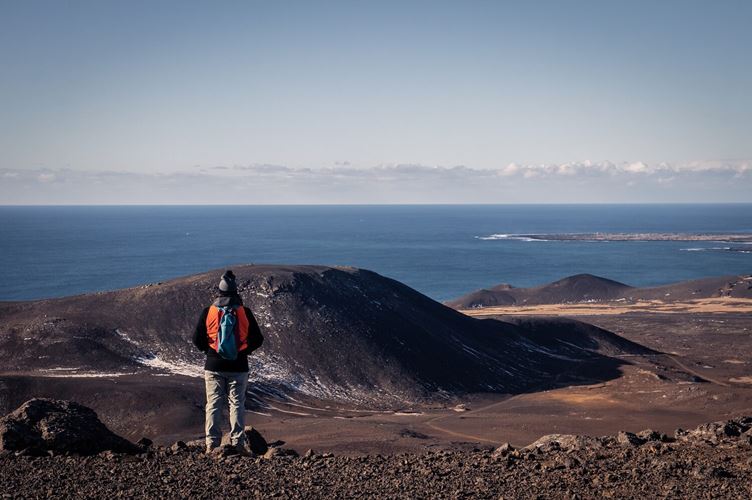
Next up is the most exciting part - our hike through the Reykjanes Peninsula's active volcanic region, just 35km from Reykjavík. This area has erupted into activity after 800 years of dormancy, with a number of eruptions since 2021.
During this tour, you'll witness the intense power of nature in the striking landscapes of black lava, active or inactive steam vents, and newly formed craters. During this hike, you might even catch a glimpse of the most recent eruption sites - an insight into the ongoing geological changes in Iceland.
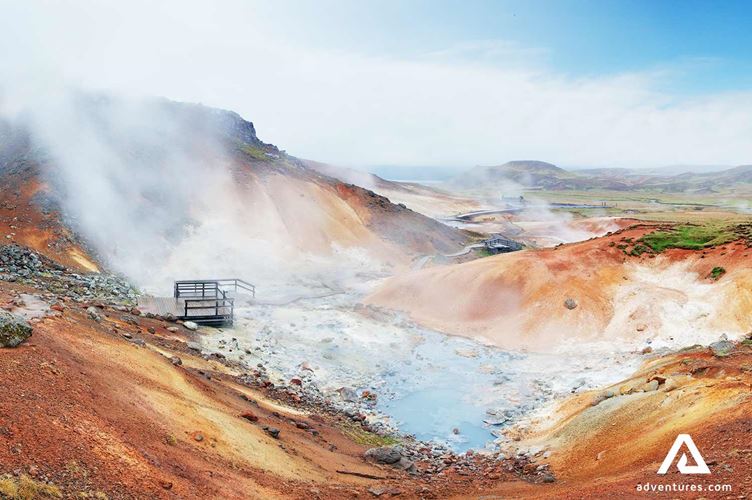
At Gunnuhver, you'll find Iceland's largest mud pool and active steam vents in a highly geothermal area near the Reykjanes lighthouse. The area is also famous for a mystical legend about a woman named Gunna. Gunnuhver's volcanic activity is a direct result of its location on the Mid-Atlantic Ridge. Visiting this site allows you to witness Iceland's impressive geothermal power first-hand.
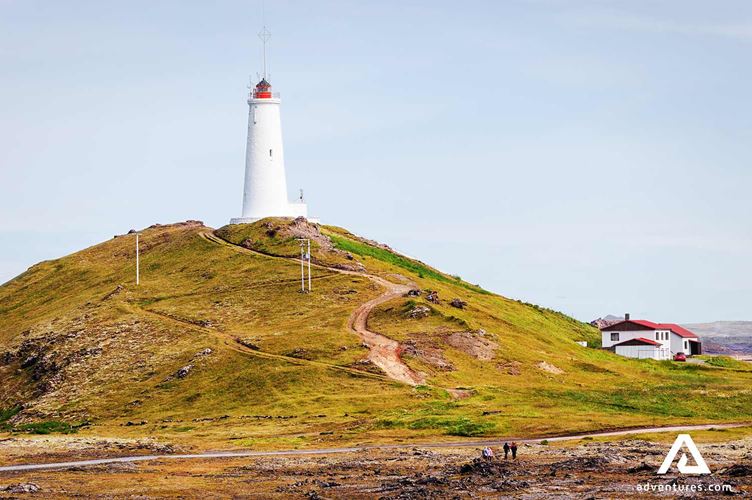
Another important stop is Reykjanesvíti, which is the oldest lighthouse in Iceland. It is located on Bæjarfell Hill and has been helping ships navigate since the early 20th century. The lighthouse sits 63 meters above sea level and offers breathtaking views of the ocean, cliffs, and birdlife. You can also spot the gannet colony on the distant Eldey Island from there.
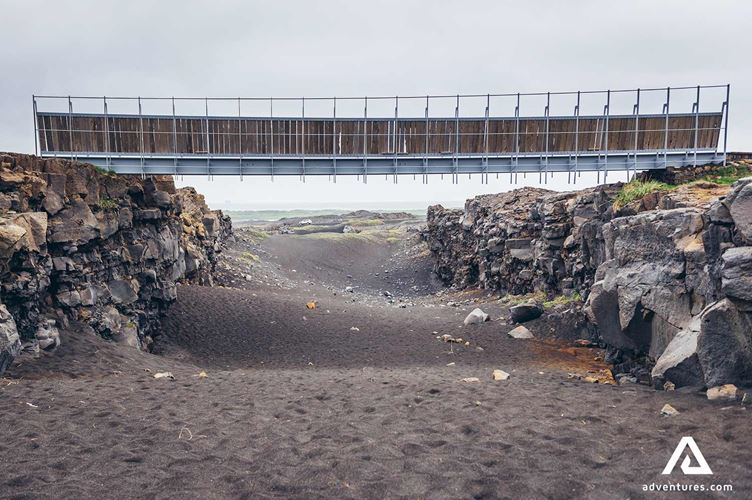
We also plan to visit Sandvik's Bridge Between Continents next, which is a captivating and one-of-a-kind location. Here, you can take a few steps and walk from Europe to North America. The footbridge, which is also referred to as the Leif the Lucky Bridge, is located on the Reykjanes Peninsula and connects the gap between the North American and Eurasian tectonic plates.
The situation at the eruption site can change. Please check regularly for updates on on accessible areas and safety rules.
The best and safest way to visit a volcano is with a guided tour. Expert guides will be able to lead you to the eruption site, choosing the most secure paths and the optimal distance to observe the newly formed lava fields so you can get the best, safest, and most enjoyable experience. You can choose to book the hike to the eruption site or book a helicopter tour and see the volcanic eruption on the Reykjanes Peninsula from above.
Authorities in Iceland have taken the necessary steps to ensure everyone's safety. Hiking in the area will only be allowed once they give the go-ahead. Keep an eye on the situation and regular updates.
When exploring volcanic areas, it's crucial to maintain a safe distance, be mindful of gas exposure, and know the direction of the wind to avoid any mishaps.
The situation at the eruption site can change. Please check the newest information on the volcano eruption on the Reykjanes Peninsula.
It is not obligatory to be accompanied by a professional guide to visit the site. However, taking a guided tour is safer than visiting the eruption site as fellow travelers will accompany you, and a local professional guide will ensure your safety.
It's very risky, and not allowed to walk on new lava because it's fragile and can break, leading to possible injuries. One of the biggest risks of walking on new lava is breaking the top layer over an unknown lava tube.
It is important for visitors to leave no traces, such as throwing stones at the lava or making inscriptions on it. Lavas are under special protection according to art. 61 of the Nature Conservation Act.
The hiking trails can be challenging and condition different day by day and even during the day. If you plan to hike to the volcano it is essential to have good hiking shoes, warm clothing and waterproof outerwear.
There are toilets in the parking lot area that have been set up.